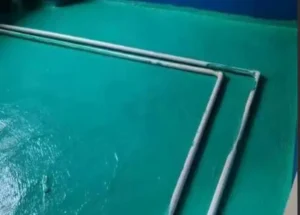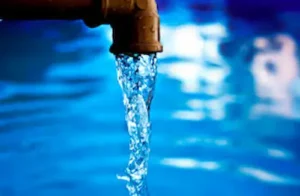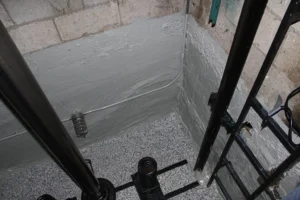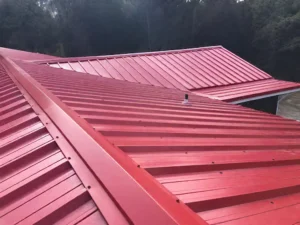Wall waterproofing is a crucial step in home renovation and maintenance. Whether it’s a bathroom, kitchen, or balcony, walls are exposed to moisture or runoff for extended periods. Improper waterproofing can easily lead to leaks, mold, and even structural damage. So, what materials are used for wall waterproofing?
Currently, the mainstream wall waterproofing materials on the market are categorized into three main categories: waterproof coatings, waterproof membranes, and rigid waterproofing materials. Waterproof coatings are a common choice for home renovation due to their ease of application and adaptability. Polymer cement-based waterproof coatings (JS waterproof coatings) are a popular choice. Composed of polymer emulsions such as acrylates and inorganic materials like cement and quartz sand, these coatings combine the high elasticity of organic materials with the durability of inorganic materials.
Polyurethane Waterproofing Coating
To apply, simply mix the liquid and powder in the correct proportions and apply to the wall. After curing, JS waterproof coatings form a tough, elastic waterproof membrane that effectively seals fine cracks and prevents water penetration. Its advantages include being environmentally friendly, non-toxic, having strong adhesion, and being easy to apply. It is particularly suitable for areas frequently exposed to water, such as bathrooms and kitchens. However, it is important to ensure that the base layer is flat, solid, and free of visible water before application. Generally, two to three coats are required, with a 4-8 hour interval between each coat, for a total thickness of at least 1.5mm. The article “What is the appropriate depth of bathroom waterproofing” provides detailed information.
Polyurethane waterproofing coating
Polyurethane waterproofing coating is another high-performance option. It is formed by the reaction and curing of components such as isocyanates and polyethers. The waterproof membrane formed by this coating is extremely elastic, with an elongation of over 300%, which can adapt to even minor wall deformations. Polyurethane coatings offer excellent weather resistance, excellent aging resistance, and a long service life, making them particularly suitable for waterproofing in areas with large temperature fluctuations or on exterior walls. However, their application requirements are high, requiring professional expertise, and they are relatively expensive. Furthermore, single-component polyurethane coatings absorb moisture from the air as they cure, making them more effective in humid environments. Two-component polyurethane coatings, on the other hand, require precise mixing and must be used within a specified timeframe after stirring.
Acrylic Waterproofing Coating
For applications with limited budgets or where quick application is required, acrylic waterproofing coating is an economical and practical option. This coating, based on an acrylic copolymer emulsion, offers excellent water and weather resistance. It’s ready to use right out of the box, requiring no mixing. It’s easy to apply and dries quickly, typically within 2-3 hours. However, its relatively poor elasticity makes it unsuitable for areas prone to significant deformation. During application, it’s recommended to first apply a layer of base treatment agent to enhance adhesion, followed by two to three coats of the coating, taking care to avoid gaps and uneven coating.
Special Treatments for Critical Areas
For detailed treatments such as corners and pipe bases, waterproof mortar or waterproof sealant is often required. Waterproof mortar is made by adding a waterproofing agent to ordinary cement mortar. It offers high impermeability and is suitable for repairing wall holes or as a protective layer for waterproofing. Application should be applied in layers, with each layer no thicker than 10mm, for a total thickness of approximately 20mm. Waterproof sealants are primarily used for joint sealing. Silicone sealants, for example, offer excellent weather resistance and elasticity, adapting to the expansion and contraction of joints. Polyurethane sealants have strong adhesion and are suitable for a variety of substrates. Acrylic sealants are environmentally friendly and non-toxic, but offer slightly lower water resistance. The choice should be based on the specific operating environment and substrate characteristics.
In addition to material selection, proper construction techniques are also crucial. Before applying wall waterproofing, the base must be thoroughly prepared: remove surface impurities such as dust and oil, repair cracks and holes, and ensure a solid and flat base. For walls with high water absorption, spray them with water until no visible water seeps through. Waterproofing should be applied following the principle of “details first, then large areas”: apply additional layers around pipe bases, floor drains, and corners before applying larger areas. When applying waterproofing paint, ensure consistent application to avoid missing areas. The roll material should be laid flat, wrinkle-free, and with tight overlaps. After the waterproofing layer is completed, a water-tightness test should be conducted to confirm no leaks before proceeding with further renovations.
The material used for wall waterproofing is crucial to the long-term safety and comfort of a building. Choosing the right waterproofing material, combined with standardized construction techniques, ensures a lasting and reliable waterproofing effect. Consumers are advised not to base their decisions solely on price, but rather to consider material performance, construction requirements, and actual needs, consulting a professional if necessary. The same applies to choosing the right material for basement waterproofing, which requires comprehensive consideration.






